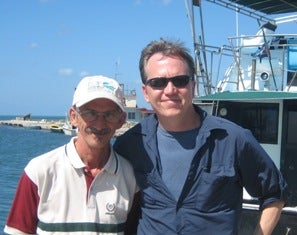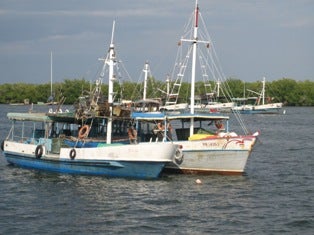The remote and sparsely populated Isla de la Juventud (“Isle of Youth”) sits off the southwestern coast of Cuba, the largest island in the Canarreos Archipelago. Legend has it that pirates, including the infamous Sir Francis Drake and Henry Morgan, sought refuge in its hidden bays between exploits in the 16th and 17th centuries. Once known as Isla de Tesoros, it is said that the island inspired Robert Louis Stevenson to write his novel, Treasure Island.
Last month I joined a group of Cuban and American scientists on a three day trip to the Isle of Youth to examine a new effort to protect and expand Cuba’s extensive network of marine sanctuaries. On the southwestern part of the island—and not far from where the pirates hid – is Punta Frances, a national park and marine protected area that now provides refuge for endangered manatees, hawksbill sea turtles, and American crocodiles and many other forms of marine life. Siguanea Bay, where we stayed, and the broader Canarreos – enclosing the Gulf of Batabano – are ecologically rich, boasting some of the healthiest and most intact coral reefs in the region. The area is also economically important, home to highly productive lobster, shark and finfish fisheries.
The highlight of the trip was sighting four manatees in the mangrove-lined channels in the park. Scientists and fishermen in the area are now working together to track and protect these magnificent critters. Scientists worked with fishermen on the island to end the harvest of sea turtles in Cuban waters and are now developing a joint initiative to protect them.
These efforts are part of an impressive 5-year project launched by Cuban officials to protect and sustain marine and coastal ecosystems around the Isle of Youth and along most of Cuba’s southern coast. This initiative, funded in large part by the Global Environment Facility, is designed to end overfishing, protect marine life, and improve management of the extensive network of marine parks and sanctuaries.
Next month, colleagues and I will return to the Isle of Youth for a workshop that EDF is holding with partners from Cuba, Mexico and the United States. The workshop will bring together fishermen, scientists, resource managers, and conservationists to discuss innovative strategies to meet common goals of protected area management and fisheries management.
Stay tuned!

